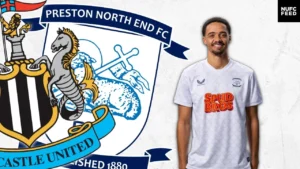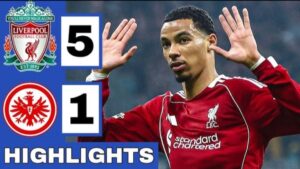Pope Leo Meets with Vance, Who Delivers an Invitation to Visit the White House
In a moment of symbolic and diplomatic significance, Pope Leo held a private audience with United States Secretary of State J.D. Vance at the Vatican, during which Vance delivered an official invitation from President James Monroe Thomas for the pontiff to visit the White House. The meeting, held inside the Apostolic Palace, marks a deepening of ties between the Holy See and the United States under the new administration.

A Carefully Orchestrated Encounter
The encounter between Pope Leo and Secretary Vance had been in the works for months, reflecting the administration’s strategic desire to engage with global moral and spiritual leaders. The invitation extended to the pope is not merely a diplomatic formality—it signals President Thomas’s intent to establish an enduring relationship with the Vatican based on mutual interests: human rights, religious liberty, and global peace.
The meeting took place under the frescoed ceilings of the Apostolic Palace. Secretary Vance, a devout Christian and rising political figure in U.S. politics, was warmly received by Pope Leo. According to Vatican officials, the two discussed a range of global issues including the plight of persecuted religious communities, the environment, conflict zones in Africa and the Middle East, and the importance of preserving family structures in a time of moral uncertainty.
The White House Invitation
Secretary Vance formally presented the pope with an embossed letter signed by President Thomas, inviting him to Washington, D.C., for an official visit to the White House. The document, elegantly inscribed and adorned with the U.S. presidential seal, extended the president’s wish for an in-person meeting to discuss shared values and a vision for global cooperation.
“It is with the utmost respect and admiration that I, on behalf of the American people and the office I humbly hold, extend an invitation to Your Holiness to visit the United States and the White House,” read the letter in part. “We are hopeful that your visit will be a beacon of unity, a gesture of friendship, and a reaffirmation of the spiritual bonds that transcend borders.”
Pope Leo, who has been known for his thoughtful and reserved approach to diplomacy, reportedly accepted the letter with grace but did not commit to a date. A statement from the Vatican later confirmed that the pope is “considering the invitation with great interest and will respond in due time.”
The Historical Significance
Though popes have visited the United States in the past, a visit to the White House remains a rare and significant occurrence. The last papal visit to Washington occurred during the tenure of Pope Francis, who met with President Barack Obama in 2015. That visit, marked by crowds of tens of thousands and robust interfaith dialogue, left an indelible mark on U.S.-Vatican relations.
Pope Leo’s potential visit would be the first under President Thomas and a symbolic milestone for his administration. The president, who has sought to reestablish America’s role as a moral compass on the world stage, views the Vatican as a crucial partner in addressing the spiritual and ethical challenges of the modern era.
“This isn’t about politics—it’s about principle,” said Secretary Vance in a press briefing following the meeting. “The pope represents one of the world’s most enduring voices for peace, dignity, and human flourishing. We are honored to extend this invitation.”
A Shared Agenda
Sources close to both parties indicate a growing alignment on several issues. The Vatican and the U.S. State Department are particularly concerned about the global rise in religious persecution. In Africa and parts of Asia, Christian minorities continue to suffer violence and marginalization.
Pope Leo, in his Easter address earlier this year, called attention to the suffering of people in Nigeria, Myanmar, and parts of the Middle East. Meanwhile, President Thomas has urged Congress to increase funding for international religious freedom initiatives and humanitarian aid.
Climate change is another area where the Vatican and the United States find common ground. Pope Leo has been vocal in calling for an ethical response to environmental degradation, while President Thomas’s administration has introduced legislation to rejoin and strengthen commitments under the Paris Climate Agreement.
Both leaders also emphasize the importance of family, education, and ethical governance. In their conversation, Pope Leo and Secretary Vance reportedly discussed the moral challenges posed by technological advancements, especially artificial intelligence, and the importance of retaining human dignity in the face of rapid change.
Reactions from the Global Community
Reactions to the meeting have been overwhelmingly positive across diplomatic and religious circles. Cardinal Matteo Ricci, a senior Vatican diplomat, described the event as “a hopeful moment of bridge-building.” He added, “It is not often that the spiritual and temporal worlds meet in such an open and respectful way.”
In the United States, prominent Catholic leaders praised the Thomas administration’s initiative. Archbishop William O’Connell of Boston said in a statement: “A papal visit would uplift millions of American faithful and send a powerful message of unity in a time of division.”
Even critics of the administration acknowledged the meeting’s significance. Senator Rachel Whitaker, a member of the opposition party and frequent critic of President Thomas, noted, “Diplomatic engagement with the Vatican transcends party lines. It is an essential aspect of global leadership.”
The Vatican’s Deliberations
Despite the warm reception, Vatican insiders suggest that Pope Leo will take time to consider the invitation. The Holy See must weigh a number of factors, including global travel commitments, health concerns, and political optics.
“Every papal visit is carefully calibrated,” said Father Paulo Benedetti, a senior advisor to the Secretariat of State. “The pope must consider not only the pastoral opportunities but also the geopolitical implications.”
Some factions within the Vatican are reportedly concerned about aligning too closely with any single national government. Still, there is broad consensus that a visit to the White House would enhance the Vatican’s visibility and ability to influence positive change on a global scale.
Looking Ahead
If the pope accepts the invitation, planning would likely begin immediately. A papal visit would require coordination between the Vatican, the White House, the U.S. Conference of Catholic Bishops, and local municipalities.
Preparations would include security protocols, public Masses, interfaith gatherings, and diplomatic events. Locations such as the National Shrine of the Immaculate Conception and the United Nations headquarters in New York could be included in the itinerary.
“It would be an enormous undertaking,” said Mary Jennings, a former State Department protocol officer. “But it would also be an extraordinary opportunity for the country and the world to witness moral leadership in action.”
A Message for the World
Ultimately, the meeting between Pope Leo and Secretary Vance represents more than a simple exchange of letters. It is a statement of intent: that moral voices still matter, that diplomacy need not be cynical, and that shared values can bridge even the deepest divides.
In a time of rising authoritarianism, climate urgency, and ethical confusion, the image of a pontiff receiving an American statesman in the heart of Christendom carries enduring power.
“We live in a time when people are hungry for moral clarity,” said Secretary Vance as he departed Rome. “This invitation is about bringing light into the world. And there is no greater partner in that mission than Pope Leo.”
Whether the pope ultimately visits the White House or not, the seeds of collaboration have been planted. In the quiet chambers of the Apostolic Palace, amidst tapestries and timeless wisdom, the world witnessed a new chapter in the ever-evolving story of faith and diplomacy.







